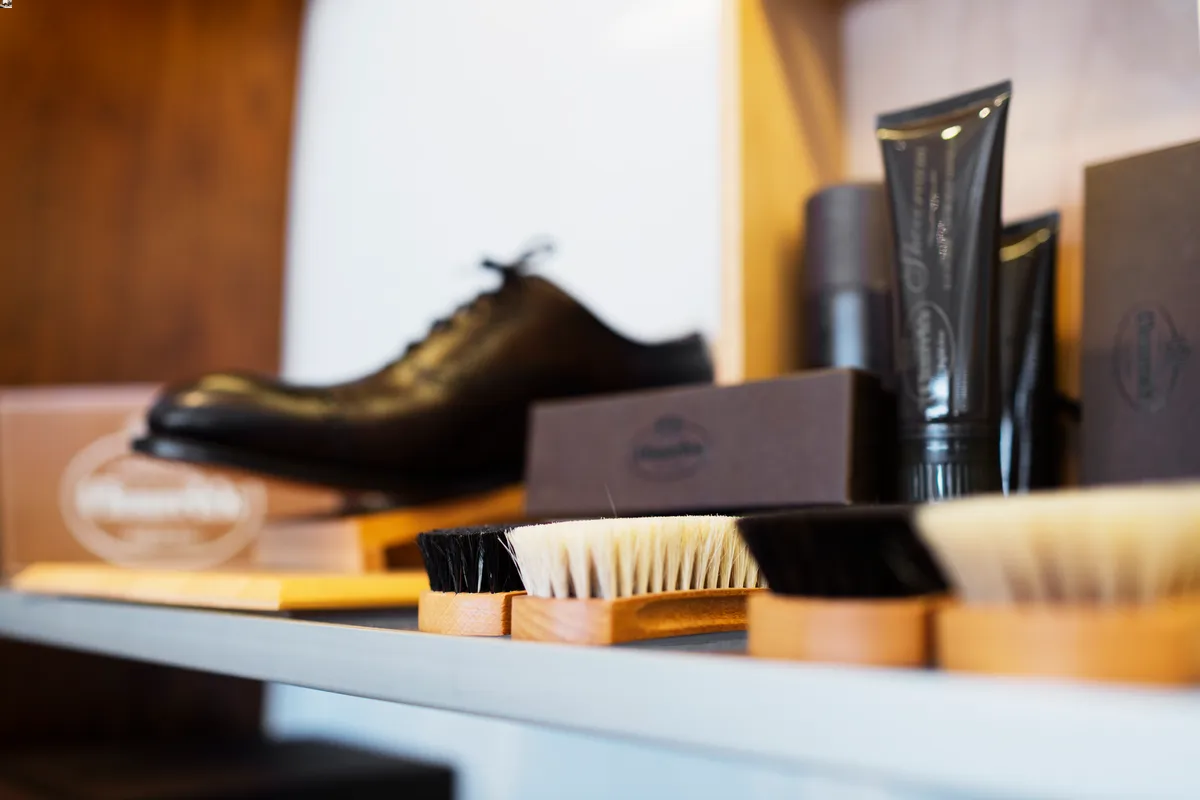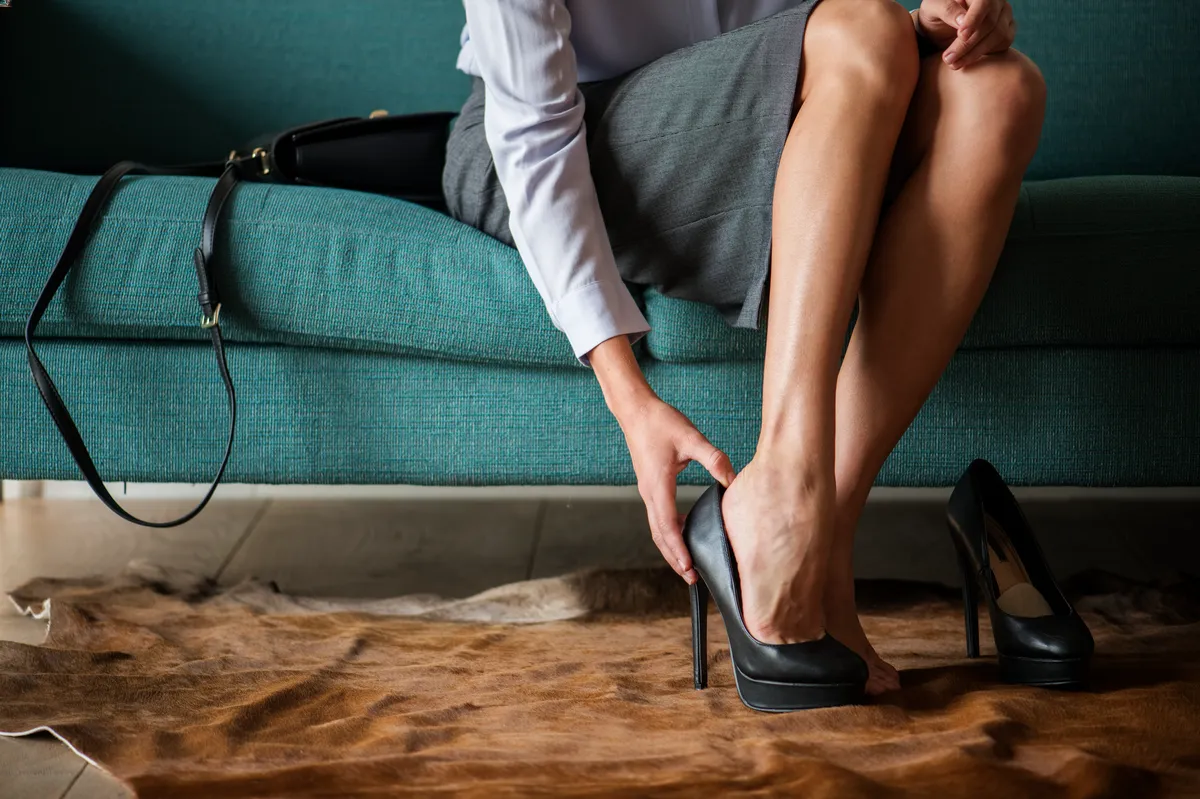
Unraveling the Mystery: What Does PS Mean in Shoes?
When embarking on the shoe buying journey, many parents may encounter the abbreviation “PS” without a clue as to what it stands for. PS in shoes represents “Preschool,” a term indicating a sizing system designated for the little ones who are experiencing a pivotal moment in their lives—transitioning from toddlerhood to a school-going age. With children in this age bracket generally between 3 to 5 years old, or falling within shoe sizes 10.5 to 3.5, understanding PS sizing is not just a matter of fitting—it’s an essential step in supporting their growth and development.
The Age of Exploration: Defining PS in Little Feet
The PS classification targets children traversing a significant milestone: the shift from baby shoes to sizes that resemble adult shoe structures. PS sizes specifically cater to 3 to 5-year-olds whose little feet once ensconced in the soft confines of infant footwear, are now ready to step into more structured, supportive shoes that help in their overall development. Grasping the meaning of PS is more than a practice in shopping; it is recognizing and responding to our children’s growing needs as they embark on life’s adventures.
Why Preschool Shoes Matter to Tiny Tots
Preschool children are at a dynamic developmental stage, where every jump, run, or skip serves as a foundation for physical growth and locomotor skills. Shoes with the PS label are conceived with such developmental needs in mind, boasting features tailored to the ever-active and changing feet of these youngsters. Therefore, the PS shoe is not just another shoe—it’s a crucial component in a child’s journey to developing strength, coordination, and confidence in movement.
Built for Growing Feet: The Features of PS Shoes
PS shoes are specifically engineered to support the changing and active feet of preschoolers. Key features are carefully considered in the design process, including flexible soles that allow natural movement, extra padding that provides cushion for high-impact activities, and closure systems, such as Velcro or easy-tie laces, devised to empower children with independence. These innovative components in PS shoes underline the attention to detail that goes into footwear created for this formative age group.
Decoding the Variety: Types of PS Shoes and Their Purposes
From the playground to the classroom, preschool children need shoes that can keep up with their varied activities. The PS shoe range is thus wide and encompassing. It includes adaptable sneakers for everyday play, durable boots for adventurous excursions, airy sandals for relaxed days, and even formal dress shoes for special occasions. Making an informed choice on the appropriate PS shoe ensures that no matter the situation, your child’s feet are well-protected and aptly supported.
Steps to Selecting the Perfect PS Pair
The quest for the perfect pair of PS shoes might feel daunting in the vast sea of options. Yet, honing in on specific factors such as fit, comfort, and durability can lead to a seamless selection process. Starting with an understanding that regular foot measurement is fundamental for a pain-free experience, parents should gravitate towards shoes made from high-quality materials to tackle the wear and tear from active use. Additionally, considering the context, such as the playground versus the party floor, will guide the selection towards the most suitable pair.
Fit and Comfort: Measuring for the Right Size
Fitting is perhaps the crux of the PS shoe puzzle. For optimal comfort and to prevent potential foot issues, a precise fit is non-negotiable. Tips to achieve this involve measuring a child’s feet every few months and, importantly, testing shoes with socks, because let’s face it, that’s how they will be worn. An adequately sized shoe accounts for slight variations, ensuring a snug and comfortable fit for those energetic preschool feet.

Durability Meets Breathability: The Material Matters
The make of a preschool shoe goes beyond mere aesthetics. The materials chosen must withstand the high-energy escapades of childhood while allowing feet to breathe. Quality materials such as leather and engineered meshes offer this balance, ensuring a shoe’s longevity and a child’s comfort. No parent wants to replace shoes at the speed of growing feet, thus investing in durable, breathable shoes which stand the test of time and play is prudent.
Activity-Appropriate Footwear: A Match for Every Occasion
PS shoes are varied as the activities a child might engage in throughout the day. A shoe fit for sprinting across the playground differs greatly from one designed for a wedding aisle walk. Acknowledging the primary use of the shoe is essential when navigating the PS shoe array, leading to choices that enhance rather than inhibit, a child’s active lifestyle.
Savvy Shopping for Preschool Shoes: Pro Tips
Armed with the know-how of what PS means in shoes, savvy shopping is all about timing and attention to detail. The perfect balance between fit, comfort, and adaptability in preschool shoes lies in selecting them at the right time of day, examining their closures for ease of use, and scrutinizing insoles and soles for adjustable fit and appropriate traction. Understanding this can make the difference between a child’s happy strides and one fraught with stumbles.
Timing Tricks: When to Shop for Growing Feet
One of the more surprising shopping tips for PS shoes is the ideal time of day for shoe fittings. Afternoons are your ally since little feet tend to swell slightly throughout the day. This trick aids in selecting a shoe that won’t feel tight after a day’s worth of adventures, lending peace of mind to both parent and child that the chosen pair will be comfortably wearable all day long.
Customizable Closures and Clever Insoles
Customization plays a significant role in modern PS footwear. Adjustable closures like hook-and-loop fasteners allow for a tailored fit, accomodating the nuances of a child’s foot. Likewise, removable insoles not only assist in achieving a better fit but also promote good hygiene—a fundamental aspect for children who are always on the move.
Sole Searching: Checking for Flexibility and Grip
The sole of a PS shoe is where the rubber literally meets the road. Parents should focus on soles that offer flexibility for natural foot movement, yet enough grip to prevent slips. A thorough hands-on examination, bending and twisting the sole, gives insights into how the shoe will perform under the rigors of child’s play.
Growth Spurts: Adapting to Constant Change
Children’s feet grow at an astounding rate, and with that comes the need for frequent shoe updates. Parents should be prepared for shoe size changes as often as every 3-4 months, ensuring the shoes they wear today won’t cramp their style—or feet—tomorrow. This awareness of growth spurts safeguards a child’s developmental course, making sure footwear adapts to their constant change.
Key Takeaways: The Lasting Impact of PS Shoes on Little Steps
The essence of what PS means in shoes transcends the mere abbreviation. It encompasses thoughtful consideration of a child’s developing feet and their varied explorations through preschool years. Reflecting on the article’s insights—from what PS stands for to the distinctions in shoe types, and the myriad of shopping tips—a parent’s journey toward choosing the right PS shoes can now be navigated with confidence and expertise. Remember, each step taken in a well-fitted, comfortable, and correct pair of PS shoes is a step toward fostering a strong foundation for a child’s growth and exploration.

Frequently asked questions
What Does PS Mean in Shoes?
PS in shoes stands for “Preschool.” It is a term used to refer to shoes that are designed for young children who are not yet in grade school. These shoes are typically made for kids who are between the ages of 3 and 5, or who wear sizes ranging from 10.5 to 3.5. PS shoes are smaller than adult sizes and larger than toddler sizes, making them perfect for kids who are transitioning from baby shoes to more grown-up styles.
Why Are PS Shoes Important?
PS shoes are important because they are specifically designed for the needs of young children. Children’s feet are not the same as adult feet, and they require different types of support and cushioning. This is especially true for preschool-aged children, who are still developing their foot muscles and bone structure. PS shoes are made with materials and features that are tailored to the unique needs of young children, such as flexible soles, extra padding, and easy-to-use closures.
What Are the Different Types of PS Shoes?
There are many different types of PS shoes available, depending on the needs and preferences of the child and parent. Some popular styles include running shoes, sneakers, boots, sandals, and dress shoes.
How to Choose the Right PS Shoes?
Choosing the right PS shoes for your child can be a challenge, but it doesn’t have to be. Here are some tips to help you make the best choice:
- Consider the fit
- PS shoes should fit well and be comfortable for your child to wear. Make sure to measure your child’s feet regularly to ensure that you are buying the right size. It is also important to try on shoes with socks, as this can affect the fit.
- Look for quality materials
- PS shoes should be made with high-quality materials that can withstand the wear and tear of active kids. Look for shoes that are made with durable fabrics, breathable materials, and non-slip soles.
- Think about the purpose
- Consider what activities your child will be doing in their PS shoes. Will they be running, jumping, or playing sports? Or will they be wearing them for more formal occasions? Choose shoes that are appropriate for the intended purpose.
What Is The Importance of Choosing the Right PS Shoes
Choosing the right PS shoes for your child is an important decision that can have a lasting impact on their foot health and overall well-being. By considering factors such as fit, quality materials, and intended purpose, you can find the perfect shoes that will support your child’s active lifestyle and help them look and feel great. So next time you’re shopping for shoes, remember the sneaky secret of PS and make the best choice for your child.
What Are Top Tips for Choosing the Perfect PS Shoes
- Shop for shoes in the afternoon when your child’s feet are at their largest
- Consider shoes with adjustable closures, such as Velcro or laces, for a custom fit
- Look for shoes with removable insoles, which can make cleaning and airing out the shoes easier
- Check the flexibility of the sole to ensure that it can bend and flex with your child’s foot
- Remember to replace your child’s shoes regularly as they grow and their feet change

Patricia Merken
Interior design blogger
Neat freak and shoe lover. American expat in Switzerland.
Blogger and mom. Blogs at Footweardrobe.



















































![Best shoe wipes and cleaners, for leather, sneakers, crep protect [2023]](https://www.footweardrobe.com/wp-content/uploads/best-shoe-wipes.jpg)





































![Best Shoe Dryer and Boot Dryer, Warmer, Deodorizer [2023]](https://www.footweardrobe.com/wp-content/uploads/Best-Shoe-Dryer-and-Boot-Dryer-Warmer-Deodorizer.webp)
![Best Shoe Shine Valet Box for Men and Women [2023 Reviews]](https://www.footweardrobe.com/wp-content/uploads/shining-shoes.webp)
![Best Leather Conditioner for Shoes and Boots [2023 Reviews]](https://www.footweardrobe.com/wp-content/uploads/best-leather-conditioner-for-boots-and-shoes.webp)

![Best Shoe Trees: 8 top cedar and plastic picks [2023 Reviews]](https://www.footweardrobe.com/wp-content/uploads/Best-Shoe-Trees-reviewed.webp)